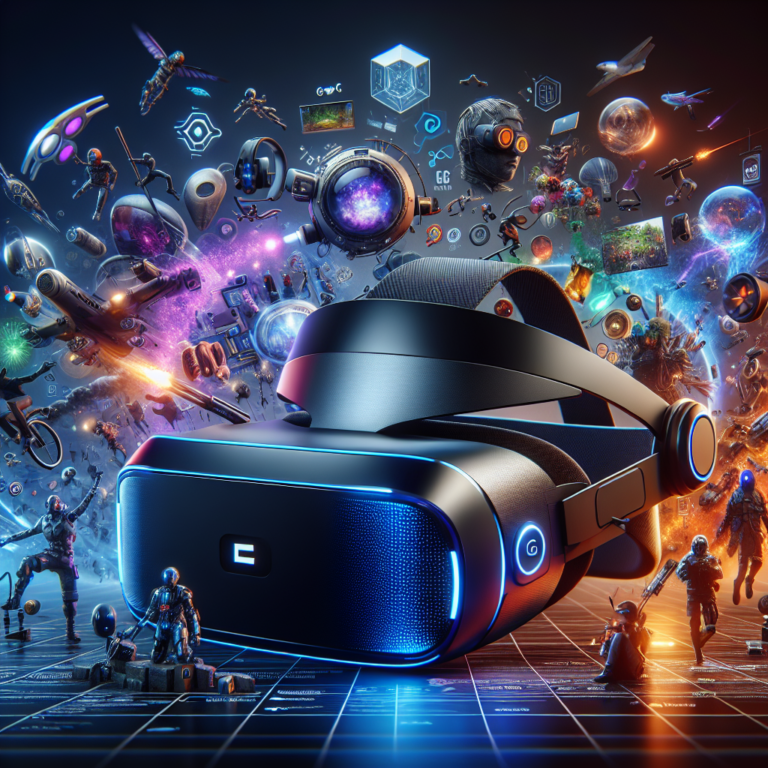Imagine a Cross-Compatible VR Headset from Sony and HTC!
Imagine a future where the lines separating different virtual reality environments vanish, allowing users to fully immerse themselves in various VR experiences without worrying about platform restrictions. This could happen if Sony and HTC, two powerhouses in the VR domain, collaborated to create a cross-compatible VR headset. Let’s explore what this exciting possibility might bring to the virtual reality landscape.
Understanding the Current VR Market
Right now, the VR market is divided, with numerous headsets targeting specific audiences. Sony’s PSVR 2 is intricately tied to the PlayStation platform, offering exclusive titles and features that complement the PS5’s performance.
The Advantages of a Cross-Compatible VR Headset
Developing a cross-compatible VR headset through collaboration between Sony and HTC presents numerous advantages:
Creating a Unified Ecosystem
- A combined effort would establish a unified ecosystem, broadening the spectrum of games and experiences users can access without being confined by their hardware. This would enable PSVR 2 players to enjoy titles exclusive to the HTC Vive Pro 2, like Half Life: Alyx and Beat Saber, and the other way around.
Boosting Hardware Capabilities
- By merging the cutting-edge eye-tracking and foveated rendering technology of the PSVR 2 with the Vive Pro 2’s high-resolution display and extensive field of view, the resulting headset would reimagine visual quality and immersion.
Streamlining Setup and Usability
- The PSVR 2 is famous for its straightforward setup, utilizing four built-in cameras to map play areas without extra sensors. By integrating this with the Vive Pro 2’s robust tracking mechanism, users could enjoy a hassle-free and intuitive setup.
Widening the Content Library
- A cross-compatible VR headset would greatly expand the available content library. Users would gain access to exclusive titles from both the PlayStation and PC VR ecosystems, including popular games like Horizon Call of the Mountain and Elite Dangerous. This makes the headset an all-in-one solution for VR entertainment.
Exciting Features of a Joint Sony-HTC VR Headset
Here are some remarkable features that a cross-compatible VR headset could offer:
Exceptional High-Resolution Displays
- This headset could implement dual high-resolution displays, potentially rivaling or surpassing the 2448 x 2448 pixel resolution per eye found in the HTC Vive Pro 2. Coupled with the PSVR 2’s OLED panels for enhanced color and contrast, users would enjoy stunning visuals.
Leading-Edge Eye Tracking Technology
- Employing eye-tracking technology from the PSVR 2 would introduce foveated rendering, optimizing resolution around users’ gaze and enhancing the visual experience while reducing the processing load.
Immersive Haptic Feedback and Adaptive Triggers
- This joint venture could feature haptic feedback across controllers, headbands, and adaptive triggers – offering users a more engaging and tactile experience. This functionality currently stands as a highlight of the PSVR 2.
Facial Recognition and Room Tracking
- Including facial tracking capabilities, similar to the optional add-on for the HTC Vive Pro 2, would elevate social interaction and augmented reality potential. The embedded cameras from the PSVR 2 would ensure robust room tracking without requiring any external sensors.
Addressing the Challenges Ahead
While the concept of a cross-compatible VR headset is thrilling, several challenges must be navigated:
Technical Integration Hurdles
- Successfully combining different technologies and ecosystems would require considerable technical effort. Ensuring smooth integration between PlayStation and PC VR platforms would pose a significant challenge.
Considerations of Cost and Pricing
- The financial implications of creating such an advanced headset could be substantial, possibly making it less accessible to a wide audience. Balancing premium features with affordability would be essential.
Strategizing the Market Approach
- Both companies would need harmonized marketing strategies to ensure that the new headset complements rather than competes with their existing products. This could involve positioning the headset as a premium option or targeting a unique segment of the market.
Envisioning the Future of VR
A cross-compatible VR headset from Sony and HTC could transform the VR industry in significant ways:
Boosting Widespread Adoption
- By presenting a cohesive platform, more users may be motivated to embrace VR technology, knowing they have access to a rich and diverse content library, regardless of their initial platform.
Fostering Innovation and Competition
- This collaboration could drive innovation across the industry, compelling other manufacturers to rise to the challenge and match or surpass the features offered by this new headset. A competitive landscape would push for enhanced products and user experiences.
Elevating User Experience
- Ultimately, the aim of any VR headset is to provide an engaging and enjoyable experience. A cross-compatible option would allow users to concentrate on what matters most: exploring virtual worlds, engaging in games, and delving into captivating new realities without the limitations of platform exclusivity.
Imagine the possibilities if Sony and HTC came together to explore the world of a cross-compatible VR headset! The potential to elevate user experiences is monumental. 🌐👓




0 Comments